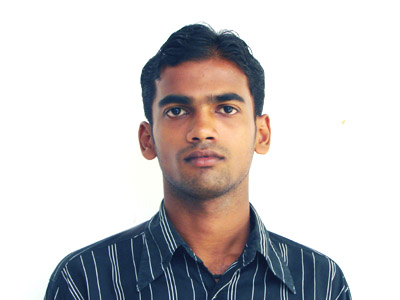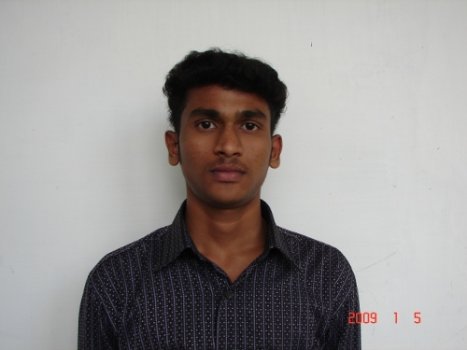- Written by Abdul
- Hits: 2059
MECH INTELECTIUM 2010 - EVENTS REPORT
PRIZE WINNERS....
PAPER PRESENTATION
First Prize
K.Gowthaman
PSG College of Technology, Coimbatore.
Topic: Friction Stir Welding.
Abstract:
This paper deals with advanced welding techniques with use of friction stir welding. This type of welding carried out by aluminium 6063 alloy practically. When compared to conventional welding techniques it is not possible to weld, such type of aluminium alloy, because of some limitations. Friction stir welding is one such non-melting joining technology that has produced structural joints superior to conventional arc welds in aluminium.Friction stir welding can be conducted on a milling machine. While doing the experiment with change in variation of rotational speed and feed rate, with that experiment we chose five trials. In between five trials, the trials from one to four gives as different types of welds obtained.At the end of fifth trial , successful weld was obtained with very good surface finish on both ends and better tensile strength at 1400rpm and 22.4 mm/rev.Tests were also performed to determine the susceptibility of FSW with aluminium 6063 alloy to corrosion. The various test were performed on the welded specimen are as follows tensile test and microstructure study. During tensile test, the maximum tensile strength obtained from two specimens was approximately 75% of the parent metal. Whereas the microstructure analysis is carried out to decrease the flow of material and change in the microstructure and grain size of measurement. By using this factor we present the paper FRICTION STIR WELDING as a advanced welding techniques.
Second Prize
T.Premkumar, K.Vaideeswara Subramanian
Thiagarajar College of Engineering, Madurai.
Topic: Computational Fluid Dynamics Applied to Diesel Exhaust after treatment system
Abstract:
Diesel engines have become much popular because of the better torque characteristics and their uses have increased exponentially in the last decade. As the main emissions faced in the diesel exhaust are NOx and smoke, they have to be controlled as the Euro norms have been tightened. After treatment method’ has been found to be the best method for reducing NOx. Zeolite based catalysts have been found to control the emissions to a very great extent particularly NOx. Researchers all over the world are engaged in developing technology for reducing NOx and other emissions. Computational fluid dynamics modelling is done for the geometry of catalytic converter. Converter size, shape, substrate position and thickness are taken into consideration for modelling. Commercial FEM software tools are employed in the flow analysis of catalytic converters. FEM is increasingly employed in the design optimization of advanced exhaust system concepts. With increasingly stringent emission standards, it has become a must to consider the best design for the catalytic converters with available software. A good flow distribution is considered at the catalyst inlet during normal operation. The software used is discussed briefly.This paper discusses the scope of supports to the optimal design of exhaust after treatment systems with the available tools.
TECHNICAL QUIZ
First Prize
T.Premkumar, K.Vaideeswara Subramanian
Thiagarajar College of Engineering, Madurai
Second Prize
G.Mohammed Yazar Arafath , P.Sindhan
Pandiyan Saraswathi Yadav Engineering College, Sivagangai.
LOGO DESIGNING
First Prize
T.Jibu Daniel, C.Rajeshkumar
P.S.N.A. College of Engineering & Technology, Dindugal
Second Prize
G.Mohammed Yazar Arafath , P.Sindhan
Pandiyan Saraswathi Yadav Engineering College, Sivagangai.
MIND BLOW
First Prize
K.Vaideeswara Subramanian
Thiagarajar College of Engineering, Madurai
Second Prize
U.Pradeepan
Pandiyan Saraswathi Yadav Engineering College, Sivagangai


